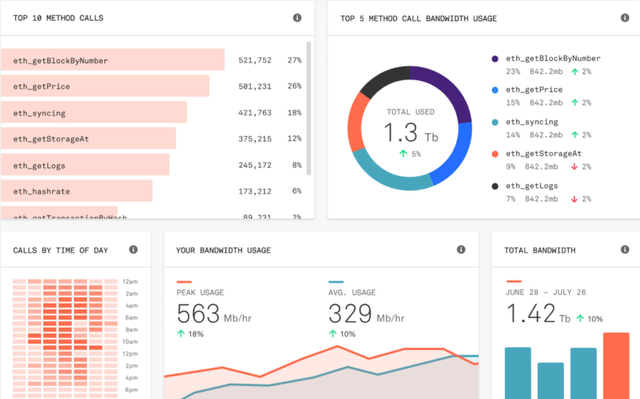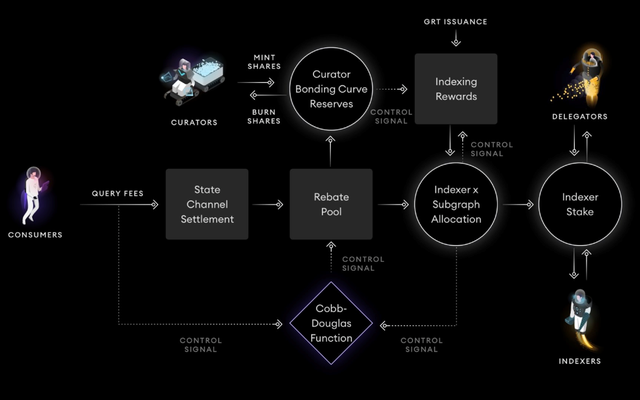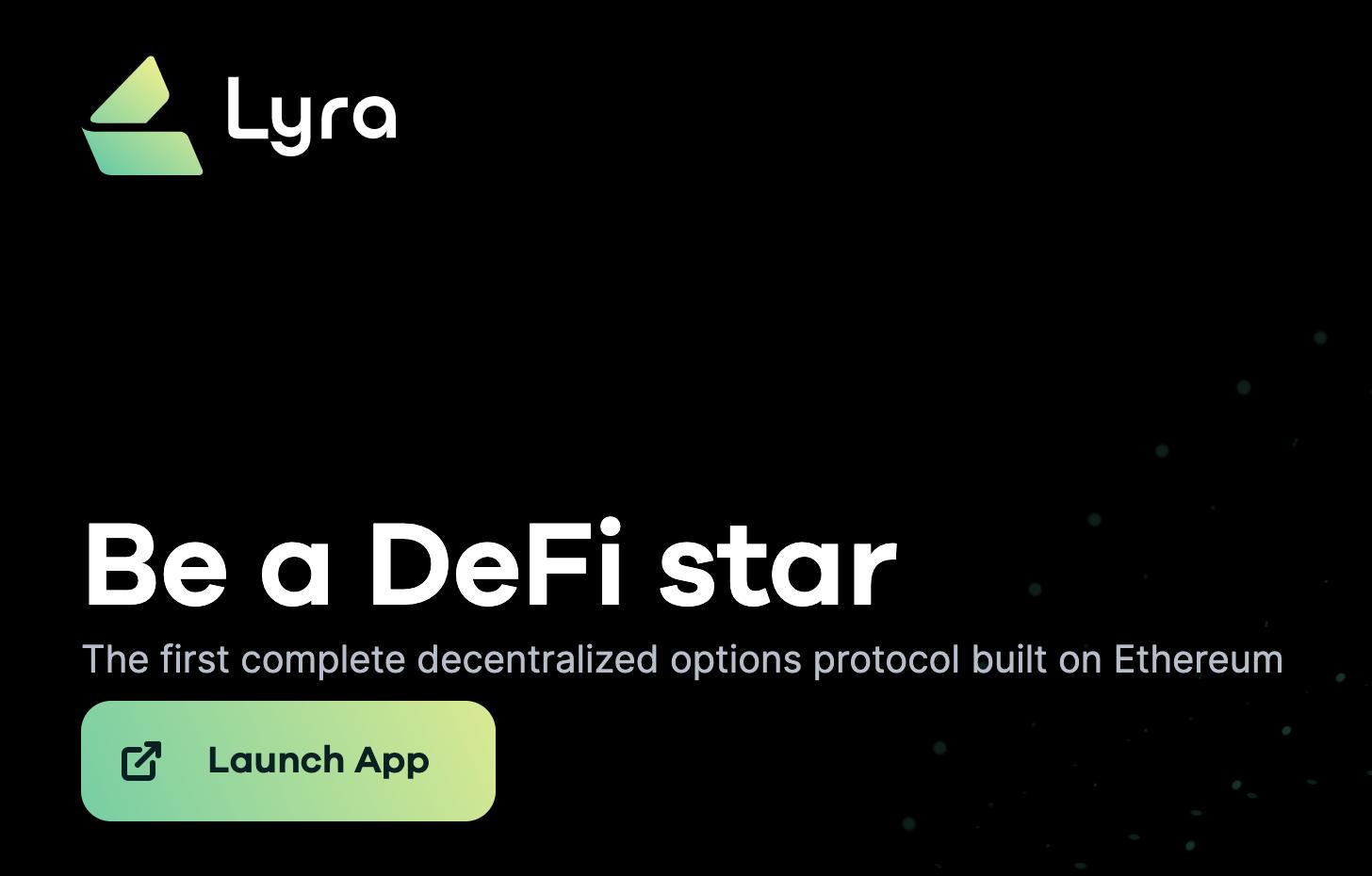The Graph Soars: The Logic and Value of the Crypto Data Indexing Market
At 1 AM on December 18, the decentralized data indexing project The Graph announced its mainnet launch. Ten minutes later, Coinbase Pro announced it would list its token GRT, and soon after, Binance announced it would list the token two hours later (4:30 PM Hong Kong time). Following this, major exchanges like Huobi, Kraken, and OKEx rushed to announce the listing of the project’s token, making it one of the most valued projects by exchanges this year.
As of 9 PM on December 19, the price of The Graph token GRT was $0.57, a 19-fold increase from its public offering price over a month ago.
Prior to this, detailed information about The Graph project was scarce. Chain Catcher wrote this article to explore how the data indexing track that the project focuses on captures project value and its development prospects.
1. Blockchain Data Market and Its Value
To understand The Graph, one must first understand the API data indexing market it targets.
In the blockchain world, data has always played a crucial role. For example, the information reflected by the on-chain data of a public chain is highly relevant for secondary market investments and the operation of the public chain itself. Although public chain data is inherently public and complete, using data providers can avoid the investment required to set up one's own nodes, leading to the emergence of leading companies like Coinmetrics and Chainanalysis.
Analyzing coin prices based on exchange data is also a necessity, giving rise to websites like Coinmetrics, Tokenanalyst, Skew, Coingecko, and Kaiko. However, since most exchange data is not publicly available, many data providers currently manually or algorithmically label the sources of on-chain addresses from exchanges to monitor deposit and withdrawal activities.
DApp data is a newly emerging field in the crypto market. Developers need to track DApp data and rankings to understand user preferences, keep an eye on market trends and changes in competitor data, adjust product development strategies in a timely manner, and analyze DApp data metrics from multiple dimensions to optimize product experience.
A past pain point was that almost all smart contract states on public chains and the blockchain data generated by DApps often did not provide easily accessible data interfaces, making it difficult to convert data into a readable format. Most information is stored in the form of logs presented by event-triggered logic mechanisms (e.g., the token balance of a certain wallet address).
In other words, most project teams and developers need a way to query, obtain, and convert data from basic data sources while storing it in a format that can be directly used in applications. However, the market has previously lacked similar product services.
According to statistics from Multicoin Capital, although the Ethereum network has fewer than 1 million transaction records per day, developers query the Ethereum Laas platform Infura over 10 billion times daily, yet the platform does not provide indexing services. While the official Ethereum clients Geth and Parity can meet some needs, they do not offer robust search capabilities and cannot scale for large-scale queries in any way.
Infura Chart
More specifically, according to developer Pelith, there were two main ways for developers to obtain information on Ethereum in the past, each with its drawbacks.
The first method is to use web3.js / ethers.js to directly obtain data from Ethereum nodes. The advantages are 100% decentralized service and direct access to on-chain data, but there are still four drawbacks:
1) The response time of nodes to requests is relatively long;
2) To obtain certain specific information, multiple requests must be sent for calculations. If using Infura, one might accidentally exceed the free quota; if using a self-hosted node, there is a high chance of being misidentified as a DDoS attack;
3) If only current Ethereum data is needed, multicall can be used, but to obtain historical data, dry-run requests must be sent one by one;
4) When too many requests are sent, it can cause long loading times or delays in the webpage.
The second method is to set up a server to scrape data from Ethereum. The advantage is that it can avoid the issues that may arise from the first method, providing an excellent user experience. However, the downside is that this is not a 100% decentralized service (Server ≠ Node), and it requires a lot of hardware resources to set up an Archive Node, as well as significant maintenance costs for the server.
In this context, the API-based data indexing market has emerged. APIs encapsulate all data, functions, and services into a black box, allowing developers to use them simply by calling an interface according to their needs.
In terms of business models, project teams often make preliminary judgments about how many users the API behind machine calls serves, how much data these users need, and how much they can afford to pay. Based on this data, they pre-store a fee for API calls or sign a contract. However, the downside is that the payment path is long and it is impossible to directly estimate the scale of user demand.
2. The Graph's Operating Mechanism
The Graph is a decentralized data indexing protocol used to index and query data from Ethereum, IPFS, and other Web3 data sources. Anyone can create and publish indexed data based on its provided open API, offering developers a more convenient way to access blockchain data.
One of The Graph's main features compared to other similar projects is its attempt to solve the issues mentioned in the first part through its token GRT. In The Graph's view, to better facilitate the flow and exchange of data, a reasonable pricing model and profit distribution method must be created, and this method must be programmable, real-time, automated, and scalable.
Imagine a user building a set of APIs to query which new high-volume transactions have recently been listed on Uniswap or to compare which lending protocol has a higher yield. Users only need to pay a certain amount of tokens to directly use such services. At the same time, the existence of the token can also incentivize data providers to offer more complete and rich data.
Currently, The Graph network mainly includes four types of ecological roles. First, consumers who pay query fees; second, indexers who run nodes to earn query fees and node rewards; third, curators who stake GRT to indicate which subgraphs are worth indexing; and fourth, delegators who stake tokens to nodes to earn rewards.
The operating mechanism of The Graph can be simply understood as three processes. First, The Graph listens for events triggered by transactions executed on Ethereum; second, when The Graph receives an event that requires updating a subgraph, it fetches on-chain data according to the definitions in the subgraph and stores the processed information in the database; third, the frontend can then use GraphQL to obtain information from The Graph.
Furthermore, the Graph token GRT has two main uses in the operation of the protocol. First is the indexer staking, where indexers stake Graph tokens to be discovered by the query market while providing economic security during their work; second is the curator signal, where curators stake Graph tokens in the curation market to predict which subgraphs have value to the network, earning rewards for correct predictions.
Users can pay with ETH or DAI for queries. However, the final settlement will be in GRT to ensure a common account unit is used throughout the protocol.
The Graph Operating Mechanism Diagram
It is worth mentioning that curators stake GRT to signal on specific subgraphs based on a bonding curve (similar to the price elasticity curve of the Bancor formula), which incentivizes curators to seek out the most popular subgraphs or high-quality data sources. The earlier they stake, the more GRT rewards they can share.
This could be one of the reasons driving the rise in GRT prices. Analysts suggest that after the project's mainnet launch, indexers will begin pricing, and delegators can stake to indexers, allowing large holders to stake more GRT to quality projects for higher returns in the early stages.
Of course, The Graph also encourages independent and rational participants to store and index subsets of large datasets while ensuring that these query providers return valid responses (not erroneous results). If erroneous results are returned, indexers providing incorrect responses will face severe penalties. If an indexer lies, the blockchain will slash the indexer's staked GRT and reward those who report malicious behavior, ensuring that "token holders are responsible for the services they provide."
However, despite targeting a particularly large market demand, these demands have already been explored by several blockchain analysis platforms, such as Dune Analytics and dfuse.
Dune Analytics is an Ethereum data analysis platform characterized by community users independently constructing relevant data charts rather than the platform itself. The platform collects all raw blockchain data into an SQL database, allowing community users to create visual charts describing activities on the Ethereum blockchain using SQL, such as the number of new users for a project, liquidity mining data, etc.
The main feature of such platforms compared to The Graph is stronger visualization, but The Graph, as the only token-issuing data analysis and indexing platform, has already formed a relative advantage in community building and influence.
The Graph's Asia Business Strategy Officer Iris has also publicly discussed the similarities and differences with other projects, stating, "The vast majority of existing competitors are centralized solutions, which means they operate their own servers, bringing risks of security and downtime, as well as costs associated with renting servers, increasing application costs."
However, Pelith also reflected to Chain Catcher that the learning cost for developers using The Graph data indexing is relatively high, "Developers must have a certain understanding of the contracts they want to index, need to clarify which information must be updated when specific events occur, and how this information is calculated, such as when dealing with situations like the balanceOf of aToken on AAVE that continuously changes."
Currently, The Graph's community enthusiasm continues to rise, and its position as the leader in the data indexing track is basically established. There are even widespread discussions about The Graph potentially becoming the next Chainlink-level project. However, as a project that has just launched its mainnet, whether its actual value can support the current high valuation still depends on The Graph's future performance.













